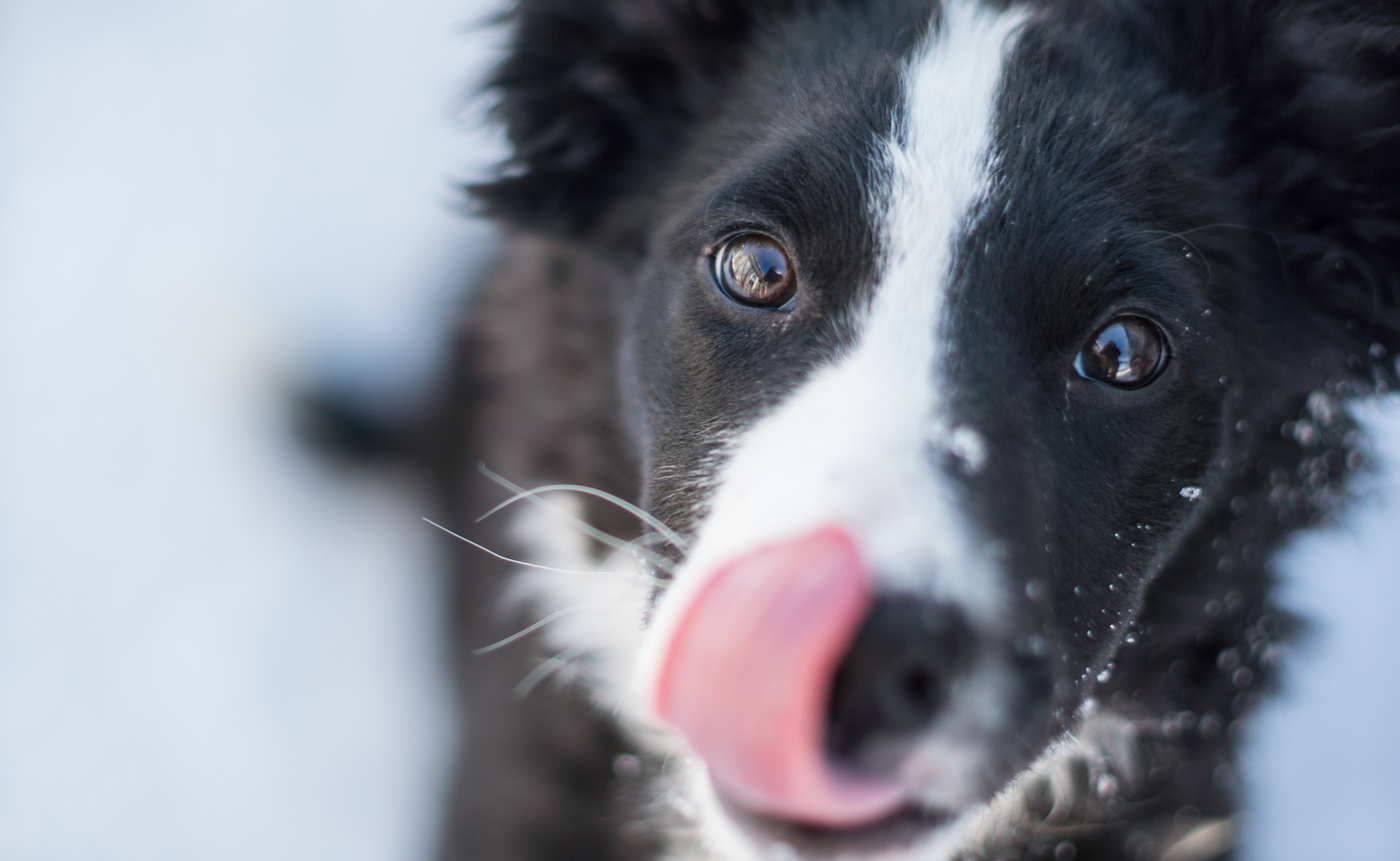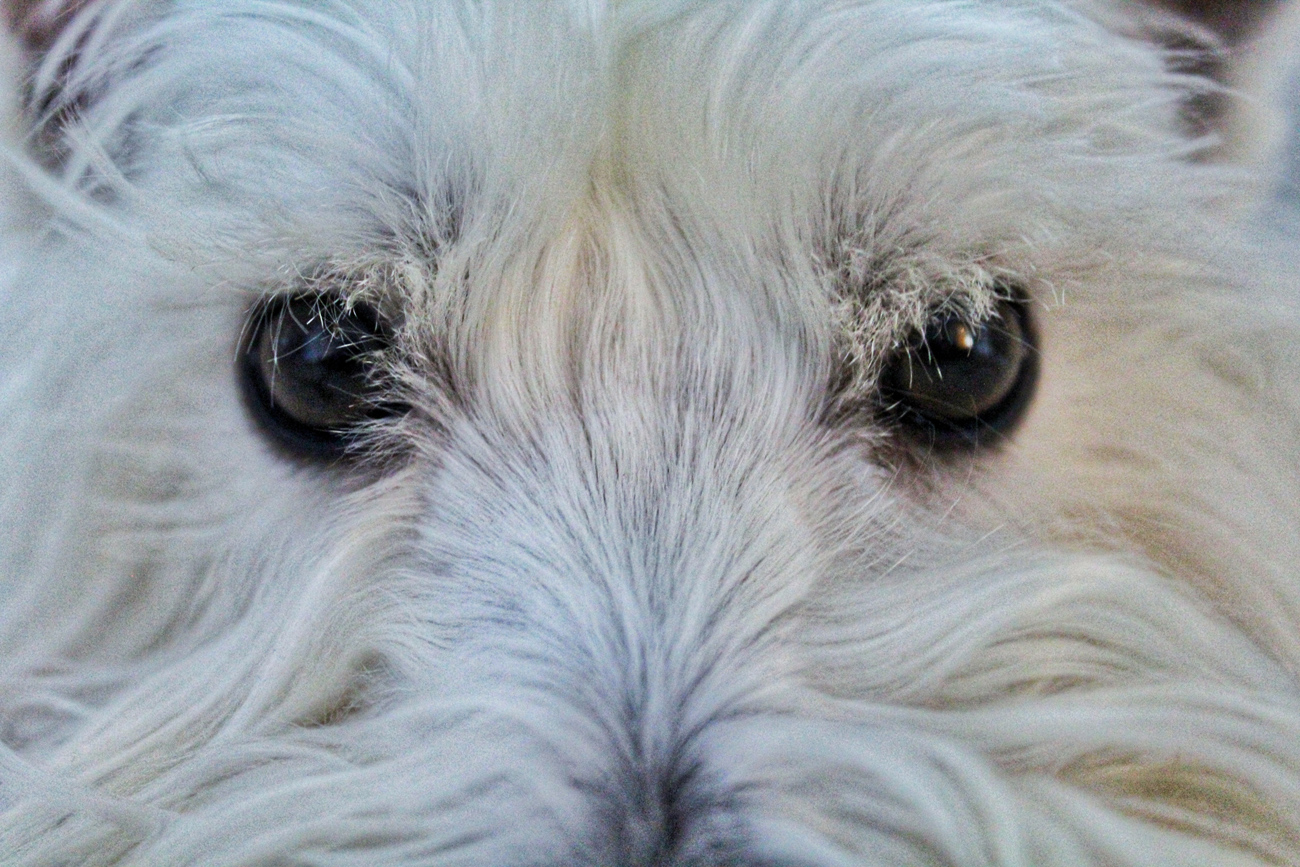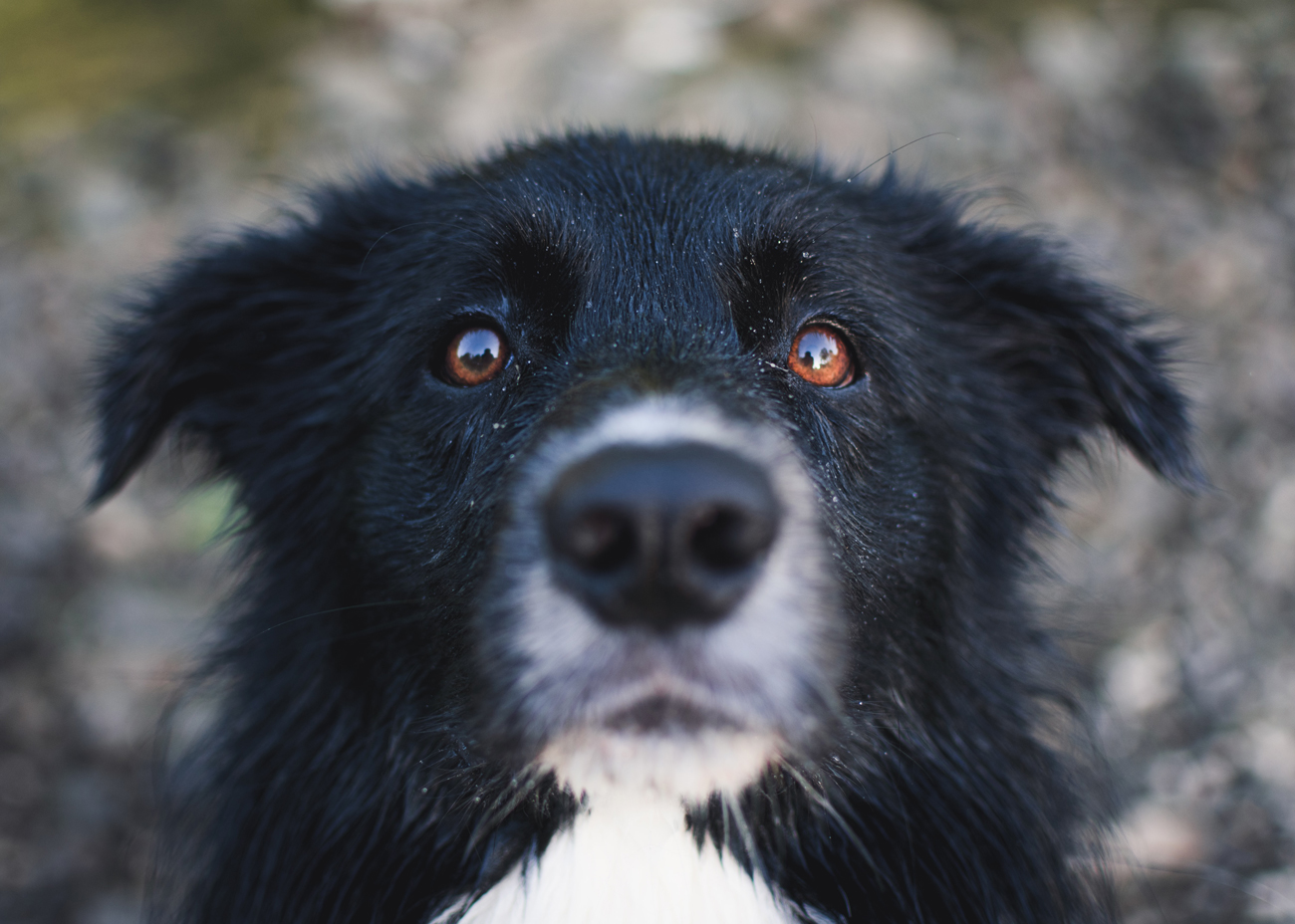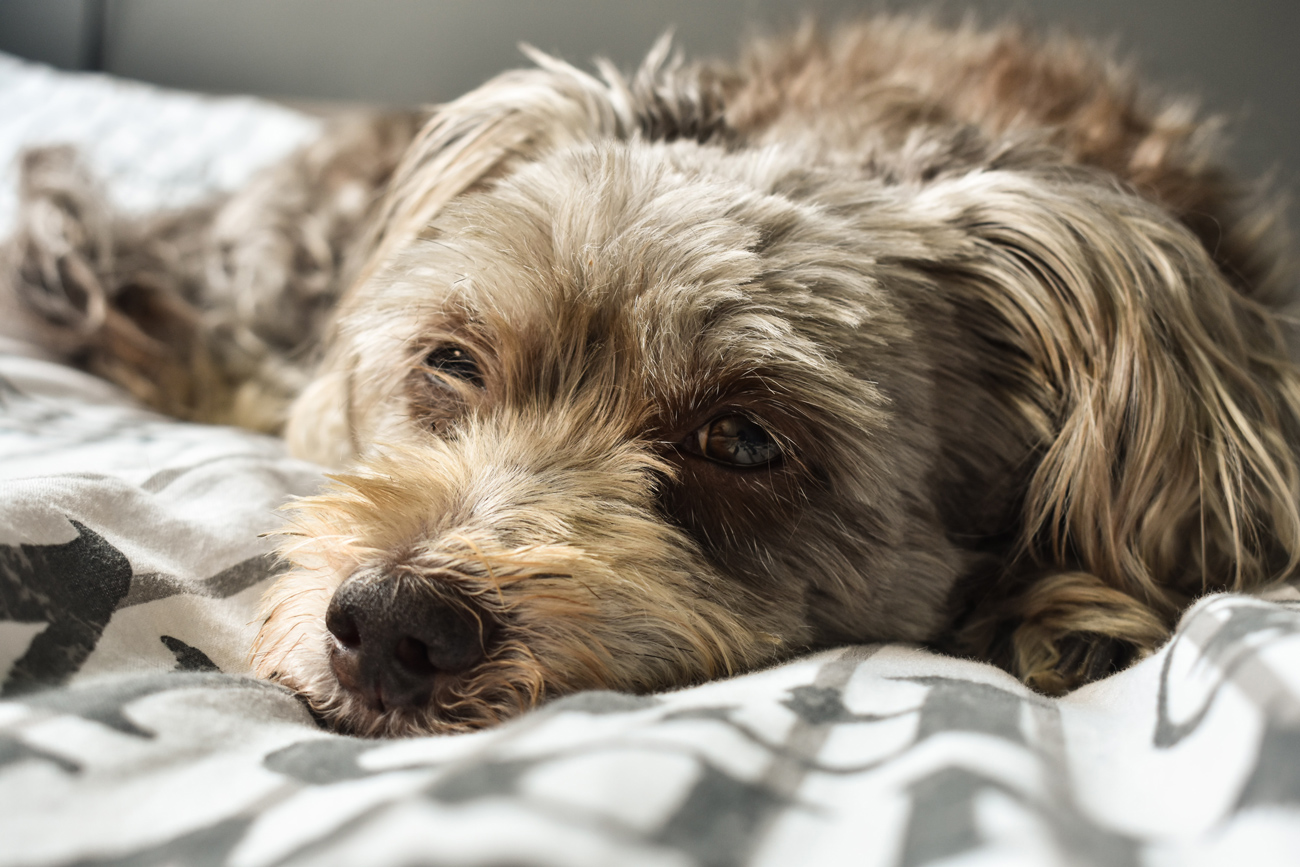
Common signs that your dog's eyesight is getting worse
30th June, 2021
A fact of life as a dog owner is that – just like their owners – dogs can go blind, in one or both eyes. This can, of course, be a distressing experience for you and your pup – but the good news here is that dogs are highly adaptable, and that many of the conditions associated with blindness are treatable.
The result is that, given the right veterinary care and lifestyle changes – not to mention some pet insurance for senior dogs to help you through any major medical interventions – you can still help your beloved pet to continue to enjoy their life to the full.
Unless it comes as a consequence of illnesses, blindness in dogs tends to develop gradually, over months or even years.
This means, of course, that it becomes an increasing factor among older pets. Given that slow progress, however, dogs can actually adapt very well to life without vision – by, for example, heightening the use of their other senses.
Now, while this is a good outcome for your much-loved pet, it can pose challenges for you – as it can make it quite difficult to notice any changes in your dog's behaviour, and to diagnose the onset of blindness.
That said, there are a range of exterior signs and behavioural changes that can give you the clues you need. Armed with this information, you can then consult your vet on the best possible treatment for your dog.
You can also start to plan changes to your pet's lifestyle that will help them accommodate their lack of vision with the minimum of stress, and without losing too many of the things that have made their life so fulfilling.
Lastly, well ahead of this time, it's worth thinking about some pet insurance for older dogs, so that some of your costs can be covered in the event of any medical procedures.
What causes blindness in dogs?
Again, as with humans, blindness in dogs can develop from a few different causes. Common factors include cataracts, glaucoma, and suddenly acquired retinal degeneration (SARDS), which causes fairly rapid blindness.
Certain breeds and sexes are also more susceptible to blindness. Shih tzus and French bulldogs are at greater than average risk of cataracts, while cocker spaniels have a higher chance of developing progressive retinal atrophy (PRA), the degeneration of the retinas in both eyes which causes gradual vision loss and leads, ultimately, to blindness.
Dachshunds, miniature schnauzers, pugs and Maltese breeds seem particularly predisposed to SARDS.

What to look out for
There are a number of clues and pointers to help you diagnose whether or not your dog is losing their sight. These include:
Changes to their eyes
The first set of clues you may want to look for are any changes to your dog's eyes themselves. For example, their eyes may appear cloudy, or you may notice small white spots in the eye.
As the PDSA explains, both of these can be signs of either glaucoma or cataracts, two of the commonest eye conditions among dogs.
Both conditions develop slowly over time, so it's a good idea to compare photos of your dog at different ages and check whether there has been any development in these conditions. Glaucoma can also make your dog's eyes appear swollen, so monitor any swelling, too.
As with all the clues we'll be listing here, if you're in any doubt it's a good idea to get your vet to take a look at your dog as soon as possible. Armed in advance with some good pet insurance for older dogs, you may be able to keep costs down in the event of any treatment.
The good news here is that, while glaucoma can’t be cured, most cases can be well managed with the use of eye drops and other medication.
As for cataracts, medicated eye drops are again one solution: however, many dogs manage well with cataracts, meaning that removal surgery may not be required.
This is especially true for dogs that lose their vision slowly (in the case of senile cataracts, for example), as they will fall back on that adaptability that dogs are famed for.
Here, as in any case of gradual blindness, you will want to adapt your house and lifestyle to give your pet the very best chance of staying safe and enjoying their life.
If your dog isn’t coping well with cataracts and you do choose surgery, your pet will need careful nursing and regular check-ups to help them recover properly.
We would recommend having some pet insurance for older dogs in place well before any complications like this arise.
Don’t forget to check the pupils
A more serious sign to look out for around the eye is a lack of pupil dilation.
Like our own, dogs' eyes should normally adjust to dark and bright light, with the pupil dilating (becoming larger) in darkness to let in more light, and constricting (shrinking) in brighter light.
If your dog's pupils are failing to dilate and constrict normally, this is likely to be a warning signal for eyesight problems.
You can test this yourself in a dimly-lit room. Hold a flashlight one or two inches from the eye and note how your dog's pupil behaves.
For a normal and healthy dog, the pupils will constrict on contact with the flashlight.
However, if your dog's pupils are still dilated even when looking at the flashlight, this suggests that they are probably not detecting light easily – and that some form of visual problem has developed. Once again, the vet should be your next port of call.

Mood and behaviour changes
So far, we've dealt with visual cues you will get from your dog's eyes. Another significant set of clues will be those changes to your beloved pet's mood, behaviour, energy levels, and general engagement with the outside world.
Even though they will adapt well over time, the loss of eyesight may well be a distressing and bewildering experience for your dog, and you can expect to see their usual energy, playfulness and interest in things and people drop off – at least for a time.
Changes might include a reluctance to go out at night, when it will be even harder than usual to pick up enough visual cues to move around safely.
You might also notice some confusion or disorientation in your dog, in situations that would not previously have posed any problems for them.
Your pet may also become nervous and easily startled. They may start getting lost outdoors, on routes which they would normally walk with ease.
Elsewhere, you may find them walking slowly and cautiously, without their usual zest. There could be a general sense of confusion and disorientation about them, and a reluctance to explore and try out new places.
The outside world can seem unfamiliar and, in some cases, even the home they have known so well can start to seem strange.
Your pet may avoid the stairs, and stick to the same familiar rooms in your home. They might become reluctant to jump on or off the bed, to go up or down stairs (especially in low light), or to go outside at night unless a light is on. They may hesitate, or even refuse, to bound in or out of the car as they used to.
More distressingly, you may even notice anxiety, depression, and even aggression during your dog's early stages of blindness. This will, after all, be a stressful time for them, and you can expect to see this reflected in their mood.
You just need to be patient and reassuring, and to smooth their way through this strange new world as best you can.
Use sounds and touches as prompts or cues; keep your home's layout as consistent and familiar as possible; devote some time to guiding your dog around the house, and cordoning off any potential hazards.
And don't forget to keep their mood buoyant: use toys and games to keep them stimulated and engaged with their surroundings.
Movement and coordination difficulties
It shouldn't be too much of a surprise to learn that, as your dog's eyesight diminishes, it becomes harder for them to navigate the world around them.
As we've seen, dogs are actually quite skilful at adapting to slow-onset blindness, so these particular changes in their movement and coordination may be harder to pick up on than the visual and behavioural cues above – but you may well notice some changes to their motor skills, too.
For instance, your dog may be unable to find their beloved toy, ball, or food dish. You might toss them a treat or a toy – but they don't seem to notice it. The excitement may be there, but they just can’t locate its source.
A good idea here is to test their peripheral, as well as central vision: if you throw the toy to the left or right, are they any better at locating it?
You may notice other spatial awareness issues, too. Your dog will have a good mind map of where all the furniture is in your house – which is why it can often be hard to spot blindness for some time, as dogs will seem to navigate their way around the home with their usual ease.
However, if something is out of its usual place – a chair pulled out from the table, for example – your dog may bump into it, as their peripheral vision just isn't giving them all the usual information they need to make their way around safely.
In the case of severe cataracts, your dog may appear stunned in bright sunlight – this is because when the pupil shrinks or constricts in very bright light, the sunlight passes through the densest, cloudiest part of the cataractous lens, producing a blinding effect.

Sudden changes to vision
The visual and behavioural changes we've looked at so far all point to a gradual loss of eyesight. In these cases, a combination of veterinary treatment and/or your dog's natural adaptability can make gradual-onset blindness a relatively easy condition to live with.
However, in the case of sudden blindness, the symptoms will be much more obvious – and the future probably less easily managed.
If blindness has come upon them suddenly – for example, as a result of SARDS, mentioned above – your pet is likely to be frightened, to stand still more, to walk very cautiously and to bump into things.
The PDSA suggests that if your dog has suddenly lost its vision, you should take into account its quality of life. Dogs will find it much harder to adapt to sudden blindness than they would to a more gradual loss of sight over many years.
This means that, sometimes, it may be kinder to put your dog to sleep if they are struggling to adapt. You may find that a suitable form of pet insurance for older dogs will be able to help you with those difficult but essential matters such as farewell cover and even a bereavement helpline.
Our advice here, as so often with an older pet, is to contact your vet at the earliest sign of anything unusual.
Many signs, one solution
If you think your dog may be losing their eyesight, there are quite a few clues to look for, from visual cues (cloudy or swollen eyes) to behavioural changes (confusion, hesitancy, even anxiety or depression).
The question of what to do next, thankfully, is much simpler: you should contact your vet to get their opinion on what treatment might be suitable.
The sooner you get some advice and (if needed) treatment, the better your pet's chances of regaining some or all of their eyesight – or at least of retaining a good quality of life.
Just like their owners, our pets need looking after as they get older. That's where Petwise insurance for senior pets comes in.
Our pet insurance for older dogs is available at various levels, so you can simply choose the one that works best for you and your pet. Features include a 24-Hour Vet Helpline and dental cover as standard.
Policy benefits, features and discounts offered may very between insurance schemes or cover selected and are subject to underwriting criteria. Information contained within this article is accurate at the time of publishing but may be subject to change.